

Read the full report
Figure: LC Packaging 2021 GHG Inventory results | Breakdown of greenhouse gas emissions
Go Back

Scope and approach
Read more on the progress we are making towards achieving our emission reduction goal and the actions we are planning to take next.
Read more about our ambition to make our packaging deliver the circular economy.
Our goal to reduce emissions in our value chain by 50% by 2030, touches upon 6 out of 8 Sustainable Packaging criteria.
Additionally, LC Packaging aims to reduce the emissions in its own operations (scope 1 and 2), by having all its offices, warehouses, and production facility LC Shankar (South Africa) achieve net-zero emissions by 2030.
Production Facility Dutch-Bangla Pack Ltd. (Bangladesh) aims for at least a 50% emission reduction within the same timeframe. As most of the greenhouse gases emitted in our own operations are related to the use of energy at our production facilities, the biggest impact will be achieved by reducing energy use and replacing the energy purchased from the grid and or generators with renewable energy.
Avoid incineration and landfill of our products after use, by making our products (closed-loop) recyclable and/or compostable;
Boost the reuse of our big bags, by expanding our WorldBag reconditioning service;
Reduce the emissions related to sea freight and other modes of transportation, by smart planning, and establishing and maintaining long-term partnerships with logistics suppliers investing in more sustainable modes of transportation;
Reduce emissions related to the production of our packaging. Our key production partners - representing 80% of procurement spend - have committed to reduce their scope 1 and 2 emissions at least 50% by 2030. LC Packaging supports its partners in achieving this goal.
Move from virgin, non-renewable materials used in our products to recycled content materials and renewable materials;
LC Packaging’s science based emission reduction targets cover our full operations and value chain, which includes the direct (Scope 1) and indirect emissions (Scope 2 and 3) of all our sales offices and warehouses, and our FIBC production facilities in Bangladesh and South Africa. We aim to achieve an absolute 50% emission reduction in our value chain by 2030, compared to base year 2021. An absolute emission reduction is a reduction in the total emissions, regardless of our growth ambition. To tackle climate change, the total emissions must go down, making this the only relevant measure.
Scope 3 categories ‘purchased goods and services’ (75.7%), ‘end-of-life treatment of sold products’ (19.0%) and ‘upstream transportation and distribution’ (2.3%) jointly represent 97% of all emissions in our value chain and are highly intertwined with the circularity of our packaging portfolio. LC Packaging aims to reduce emissions in these areas by among others:
Lucas Lammers,
CEO LC Packaging
“LC Packaging International BV commits to reduce absolute scope 1 and 2 GHG emissions 50% by 2030 from a 2021 base year. LC Packaging International BV commits to reduce absolute scope 3 GHG emissions by 50% within the same timeframe.”
Scroll down
Our most important task in life is to secure the health and safety of our children and grandchildren
before 2030, achieve net-zero emissions before 2050 and halt global temperature rise at 1.5°C above pre-industrial levels. Businesses that have not committed to reduce emissions in line with the 1.5°C pathway fall short in our joint fight against climate change and would fall below the SDG Ambition Benchmark.
LC Packaging is committed to a 50% greenhouse gas (GHG) emission reduction in its value chain by 2030, in line with the goals of the Paris agreement of 2015.
In November 2023, the Science Based Targets initiative (SBTi) has approved LC Packaging’s near-term science-based emissions reduction target.
Due to the availability of better data, changes to the calculation methodology, the acquisition of Karl Weiterer, and feedback from the SBTi, a recalculation has been made for base year 2021.
By 2030, no more than 181,488 t of CO2 equivalent may be emitted in our value chain.

Background
action

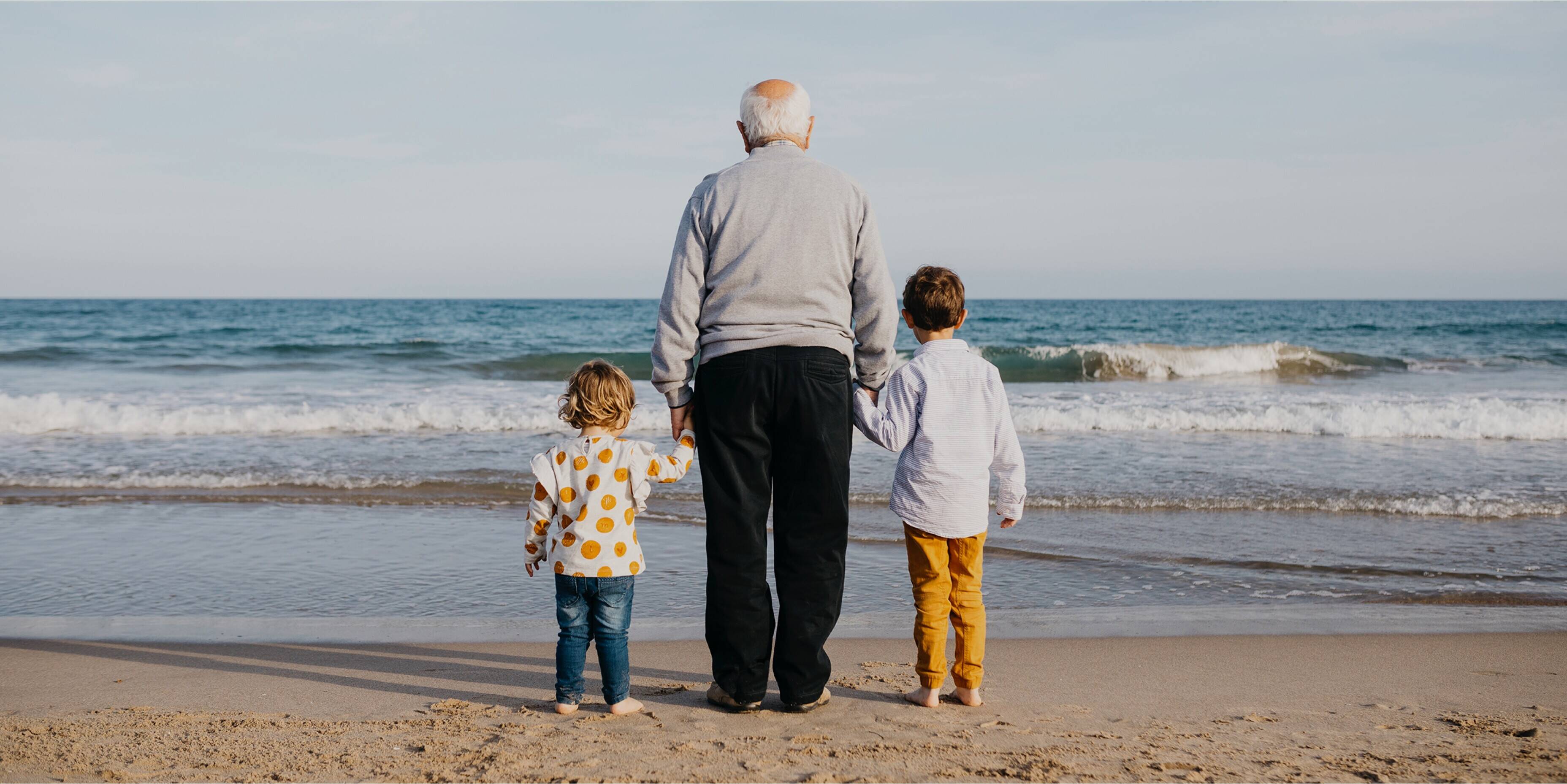
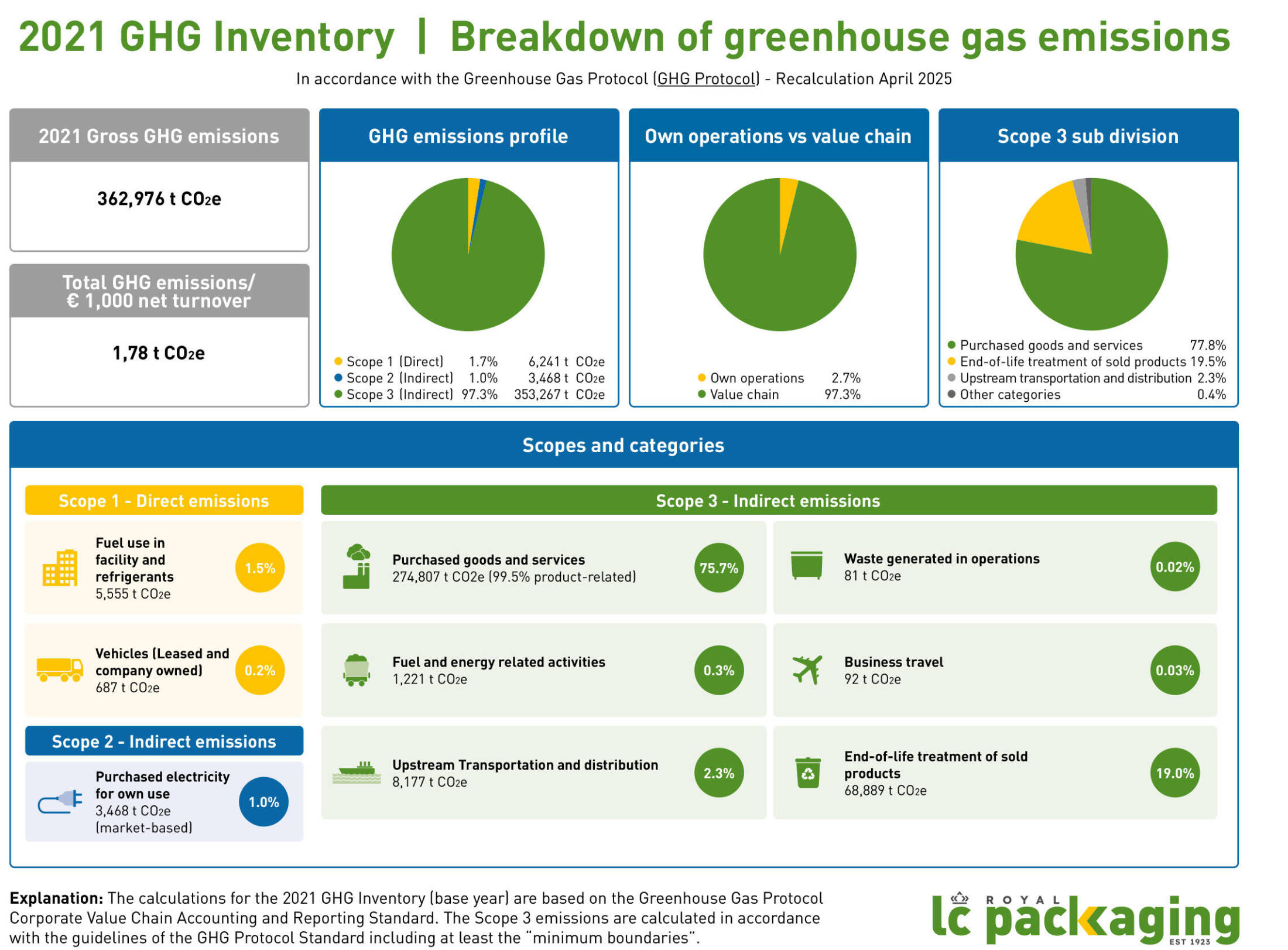
Goal explanation
The most impactful threat for the well-being of this and future generations is climate change. The IPCC’s Sixth Assessment Report stated ‘code red’ for humanity. It showcased the need for urgent climate action to maintain a habitable planet for humankind. To avoid the most significant effects of climate breakdown, the world must halve greenhouse gas (GHG) emissions
Production Facility Dutch-Bangla Pack Ltd. (Bangladesh) aims for at least a 50% emission reduction within the same timeframe. As most of the greenhouse gases emitted in our own operations are related to the use of energy at our production facilities, the biggest impact will be achieved by reducing energy use and replacing the energy purchased from the grid and or generators with renewable energy.
Additionally, LC Packaging aims to reduce the emissions in its own operations (scope 1 and 2), by having all its offices, warehouses, and production facility LC Shankar (South Africa) achieve net-zero emissions by 2030.
Avoid incineration and landfill of our products after use, by making our products (closed-loop) recyclable and/or compostable;
Boost the reuse of our big bags, by expanding our WorldBag reconditioning service;
Reduce the emissions related to sea freight and other modes of transportation, by smart planning, and establishing and maintaining long-term partnerships with logistics suppliers investing in more sustainable modes of transportation;
Reduce emissions related to the production of our packaging. Our key production partners - representing 80% of procurement spend - have committed to reduce their scope 1 and 2 emissions at least 50% by 2030. LC Packaging supports its partners in achieving this goal.
Move from virgin, non-renewable materials used in our products to recycled content materials and renewable materials;
Figure: LC Packaging 2021 GHG Inventory results | Breakdown of greenhouse gas emissions
Lucas Lammers,
CEO LC Packaging
“LC Packaging International BV commits to reduce absolute scope 1 and 2 GHG emissions 50% by 2030 from a 2021 base year. LC Packaging International BV commits to reduce absolute scope 3 GHG emissions by 50% within the same timeframe.”
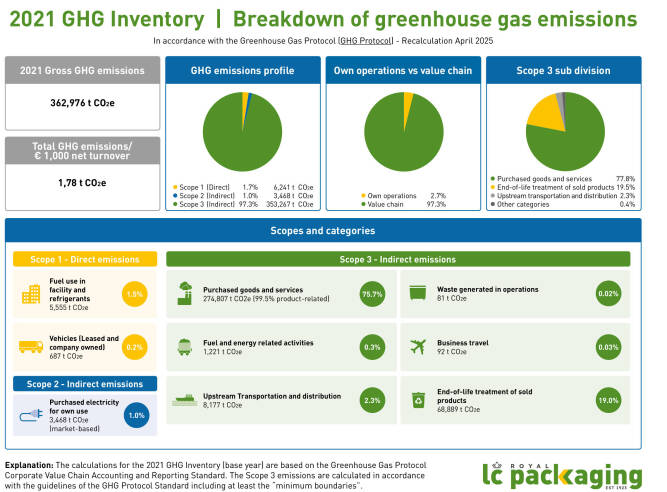
Read more on the progress we are making towards achieving our emission reduction goal and the actions we are planning to take next.
Read the full report
Download Overview of GHG Protocol
Go Back

Read more about our ambition to make our packaging deliver the circular economy.
Our goal to reduce emissions in our value chain by 50% by 2030, touches upon 6 out of 8 Sustainable Packaging criteria.
LC Packaging’s science based emission reduction targets cover our full operations and value chain, which includes the direct (Scope 1) and indirect emissions (Scope 2 and 3) of all our sales offices and warehouses, and our FIBC production facilities in Bangladesh and South Africa. We aim to achieve an absolute 50% emission reduction in our value chain by 2030, compared to base year 2021. An absolute emission reduction is a reduction in the total emissions, regardless of our growth ambition. To tackle climate change, the total emissions must go down, making this the only relevant measure.
Scope 3 categories ‘purchased goods and services’ (75.7%), ‘end-of-life treatment of sold products’ (19.0%) and ‘upstream transportation and distribution’ (2.3%) jointly represent 97% of all emissions in our value chain and are highly intertwined with the circularity of our packaging portfolio. LC Packaging aims to reduce emissions in these areas by among others:
Scope and approach
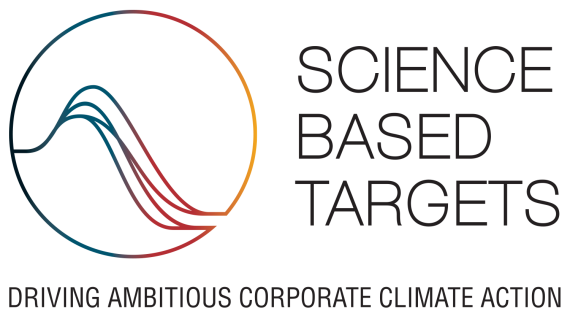

LC Packaging is committed to a 50% greenhouse gas (GHG) emission reduction in its value chain by 2030, in line with the goals of the Paris agreement of 2015.
In November 2023, the Science Based Targets initiative (SBTi) has approved LC Packaging’s near-term science-based emissions reduction target.
Due to the availability of better data, changes to the calculation methodology, the acquisition of Karl Weiterer, and feedback from the SBTi, a recalculation has been made for base year 2021.
By 2030, no more than 181,488 t of CO2 equivalent may be emitted in our value chain.
Goal explanation
before 2030, achieve net-zero emissions before 2050 and halt global temperature rise at 1.5°C above pre-industrial levels. Businesses that have not committed to reduce emissions in line with the 1.5°C pathway fall short in our joint fight against climate change and would fall below the SDG Ambition Benchmark.
The most impactful threat for the well-being of this and future generations is climate change. The IPCC’s Sixth Assessment Report stated ‘code red’ for humanity. It showcased the need for urgent climate action to maintain a habitable planet for humankind. To avoid the most significant effects of climate breakdown, the world must halve greenhouse gas (GHG) emissions
Background
Our most important task in life is to secure the health and safety of our children and grandchildren
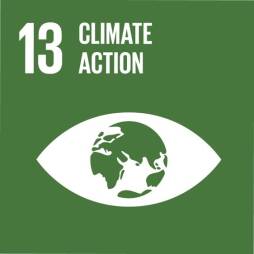
action
